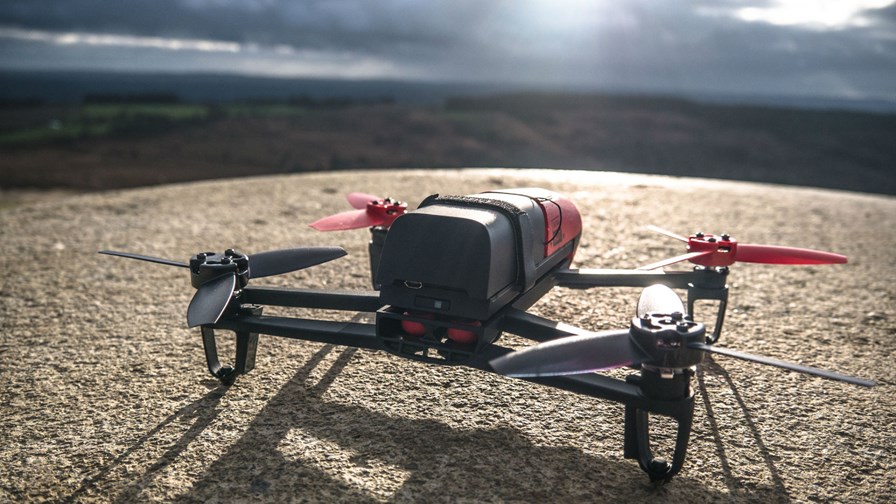
via Flickr © y.caradec (CC BY-SA 2.0)
Reaction to the US FAA's rather modest and incomplete proposals to regulate the most pervasive problems and potentially the worst excesses of the nascent drone operations industry in America has been swift - and mostly dismissive. (see Part I: Droning on and on in America)
The main bone of contention for the pro-drone lobby is the suggestion that commercial drone operators will have to fly their devices in visual line-of sight with operator observers posted at various points along an approved route to monitor the flight. Other restrictions will be that drone flights will be permitted only during daylight hours, that drones should travel at no more than 100 miles per hour and only below an altitude of 500 feet.
Critics of the FAA, together with the drone lobby iteslf, say such caveats will cripple the baby industry and so prevent the potential for drone operations to be fully realised. The pro -drone operators insist that they must be allowed to fly them round the clock, above 500 feet and, as and when necessary, as well as out of direct line-of-sight.
In an inadvertent Internet posting made late last week by the FAA and later withdrawn from circulation, the regulator said it has weighed-up the pros and cons of allowing out of line-of-sight drone flights to rely on on-board cameras and sophisticated navigational software to manage drone journeys and had concluded that the current technology is lacking and cannot compare with the the ability of the human eyeball to suss things out, and in less than a blinking of an eye, apply a remedial strategy.
Meanwhile, drone technologists are working to make the devices better. One such is Skydio headquartered in Menlo Park in Silicon Valley, California. The company has developed a prototype 'obstacle-avoidance system' based on computer vision, that it claims will be commercially available in Spring 2016. Skydio is also working on drone artificial intelligence that would allow the real-time processing and interpretation of visual data on-board to allow a drone to fly over and around obstacles like trees, buildings and people.
Of course, if it is to be any sort of a long-term commercial success, drone technology will have to develop to the point where journeys are guaranteed to be 100 per cent safe whilst delivering products to the right place, at the right time, 100 per cent of the time. No logistics service on the planet has ever before been able to guarantee such a success rate and as we all know, what can go wrong will go wrong at some time or another. This is going to be a big leaning experience especially for those that fall foul of deranged drones.
Meanwhile and elsewhere, drone proponents have had a confidence boost from the results of a recent survey which show that 66 per cent of US citizens believe drones will be delivering groceries, clothes and other residential retail services by 2015. Of that 66 per cent, 80 per cent say they would give their business to drone companies that could fulfil orders quickly and accurately. Well, not much point in bothering with them if that can't do that, now is there?
The research by Walker Sands Communications in Chicago, entitled “Reinventing Retail: What Businesses Need to Know in 2015,” reveals that despite the myriad of problems faced by the nascent commercial retail drone sector, the majority of US consumers do nonetheless believe that drone services will play a significant part in the future success of the likes of Amazon and Google.
The Walker Sands research shows that 14 per cent of Americans believe drone deliveries will begin within the next year and 22 per cent think it will happen by mid-2017, while 32 percent feel it will happen by 2017. A further 30 per cent put the timeframe at 2020. Most respondents said they expect to have books, videos and clothing delivered to them by drones in the first instance.
What's more, consumers would be willing to pay more to get online orders delivered by drone. Eighty per cent of those interviewed said they would be willing to pay "at least" US$5 extra for drone deliveries, provided they arrive within an hour of the order being placed. A mere 23 per cent of those surveyed professed no interest in drone delivery services.
For its part, drone evangelist-in-chief, Amazon, says drone technology is moving very, very quickly and adds that it is already in the tenth iteration of its prototype machine. The company claims to have tested and retested the "full spectrum" of the device's capabilities and has developed 'sense-and-avoid' sensors and algorithms that will allow the devices to deliver items directly and without hitting any obstacles en route, whether they be permanent or temporary.
Amazon's experimental drones use battery-powered rotors, can fly at 50 mph and can carry a five pound payload - enough says Amazon to deliver deliver 86 per cent of the products it carries. Tough luck then if you want to buy the latest James Elroy or Gibbons' "Decline and Fall of the Roman Empire." They'll keep the drones grounded.
Email Newsletters
Sign up to receive TelecomTV's top news and videos, plus exclusive subscriber-only content direct to your inbox.




